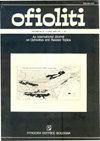Deformation history of ultra high-pressure ophiolitic serpentinites in the Zermatt-Saas Zone, Créton, Upper Valtournanche (Aosta Valley, Western Alps)
IF 1.3
4区 地球科学
Q2 GEOLOGY
引用次数: 5
Abstract
Detailed multiscale structural analyses and mapping (1:20 scale) integrated with petrological investigation were used to study a portion of the Zermatt-Saas serpentinites that crop out in upper Valtournanche (north-western Italy). Results are synthesized in a foliation trajectory map that displays the transposed original lithostratigraphy of a serpentinite body exposed at Creton. The serpentinite body comprises magnetite sheets and rare, decimetre-thick, diopsidite layers and lenses. Moreover, veins and aggregates of Ti-chondrodite and Ti-clinohumite, olivine-rich layers and lenses, veinlets of olivine, and layers of dark pyroxenite are embedded in the serpentinites. Serpentinites and associated rocks record three relative age groups of ductile structures: D1 consists of rare folds and S1 foliation; D2 is a group of isoclinal folds and a very pervasive foliation (S2), which is the dominant structure; D3 includes a crenulation and shear zones affecting S2. The detailed meso-structural and microstructural analyses allowed individuating the metamorphic environment of successive deformation stages and correlating the resulting tectono-metamorphic investigation with those already inferred in surrounding areas. In addition, metre- to submillimetre-sized pre-D2 structural, mineralogical, and textural relics have been clearly identified in spite of the strong transposition imposed during the development of S2 high pressure - ultra-high pressure foliation.西阿尔卑斯奥斯塔山谷上Valtournanche cracimton Zermatt-Saas带超高压蛇绿岩变形史
详细的多尺度结构分析和测绘(1:20比尺)结合岩石学调查,研究了在意大利西北部上Valtournanche出现的Zermatt-Saas蛇纹岩的一部分。结果合成了一幅叶理轨迹图,该图显示了在Creton暴露的蛇纹岩体的原始岩石地层。蛇纹岩体由磁铁矿片和罕见的分米厚透辉石层和透镜体组成。此外,在蛇纹岩中还嵌有钛-软骨石和钛-斜殖石的脉体和集合体、富橄榄石层和透镜体、橄榄石细脉和暗色辉石层。蛇纹岩及其伴生岩记录了3个相对年龄组的韧性构造:D1为稀有褶皱,S1为片理;D2是一组等斜褶皱和非常普遍的叶理(S2),这是主要的构造;D3包括影响S2的砾岩和剪切带。详细的细观构造和微观构造分析可以对连续变形阶段的变质环境进行个体化,并将由此得出的构造变质研究结果与周围地区已经推断出的结果相关联。此外,尽管在S2高压-超高压片理发育过程中施加了强烈的转置作用,但仍清晰地识别出了米至亚毫米级的d2前构造、矿物学和结构遗迹。
本文章由计算机程序翻译,如有差异,请以英文原文为准。
求助全文
约1分钟内获得全文
求助全文
来源期刊

Ofioliti
地学-地质学
CiteScore
2.40
自引率
7.70%
发文量
1
期刊介绍:
Since 1976, Ofioliti provides an international forum for original contributions and reviews in the field of the geodynamics, petrology, geochemistry, biostratigraphy, stratigraphy, tectonics and paleogeography applied to ophiolitic terrains and modern oceanic lithosphere, including their sedimentary cover. Studies of topics such as geodynamics of the mantle, the evolution of orogens including ophiolites and paleoceanography are also welcome
 求助内容:
求助内容: 应助结果提醒方式:
应助结果提醒方式:


